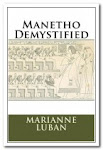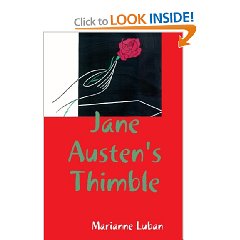Fortunately, the DNA announcements from Egypt were accompanied this time by a paper in the scientific journal, JAMA. The disputed identities of the mummies of Amenhotep III and Queen Tiye [Elder Lady from KV35] have now been confirmed. The father of the pharaoh, Tutankhamun is the KV55 individual [probably Akhenaten] and his mother the "Younger Lady" from KV35. The surprise is that Tutankhamun's parents were siblings--in other words they are both offsprings of Amenhotep III and Queen Tiye. The microbiologists who worked on the study are apparently still going to try to find out if the "Younger Lady" could still possibly be Nefertiti. They know the path to the identification [a foetus from Tutankhamun's tomb, of which he is probably the father and whose mother would then be Ankhesenamun, a daughter of Nefertiti, sharing her mtDNA]and, while, the JAMA paper claims this couldn't be achieved, another source says it's already been done.
Joyce Tyldesley seemed to be quite familiar with the DNA work of Scott Woodward and his BYU team, who first sampled some of the royal mummies, and mentions it several times in her 2000 book, "The Private Lives of the Pharaohs", which corresponded to a TV documentary by the same name with Woodward et al. On page 143 she writes: "While it has not been possible to extract a genetic profile for the smaller foetus,the larger baby has yielded a mitochondrial DNA sequence through which the scientists may be able to trace the maternal DNA of Ankhesenamun and her mother, Nefertiti."
There is one more possibility that would make the "Younger Lady" have the same DNA as any daughter of Amenhotep III and Queen Tiye [and therefore appear a full sister to the KV55 person] and that is if Amenhotep III had a daughter with an identical twin sister of Tiye. That could be problematic. No such person has ever surfaced in the record. Also awkward is trying to find a full sister for Akhenaten with whom he could have had Tutankhamun later in his reign rather than sooner. Akhenaten is seen with Nefertiti from his earliest days as king. There is a briefly attested secondary wife, Kiya, but she is no more styled "king's daughter" than Nefertiti. On the other hand, once Ankhesenamun became the wife of Tutankhamun, she is not styled "king's daughter", either, even though we know she really was one. Her attestations are few, as well. As for
Smenkhkare, if he was a full brother of Akhenaten [with the same DNA--that is any of four possible combinations of alleles from each parent at a given marker] and he was married to Meritaten, who would only have similar DNA as he if both her parents were full siblings--if this couple engendered Tutankhamun. There is also Baketaten, but she is shown as a child at Amarna, and some people have postulated her as a daughter of Akhenaten and not his sister, as she is not styled "snt nsw" but "sAt nsw".
As for the parentage of Nefertiti, it is never mentioned anywhere to my knowledge. Some have believed Ay to be her father but that was not written in his commoner tomb at Amarna. The only thing that is pertinent there is that Ay's wife, Tey, was a "nurse of the goddess", meaning Nefertiti. Meanwhile, Akhenaten and Nefertiti identified themselves with Shu and Tefnut, siblings who sprang from Ra and formed a kind of "Holy Trinity" with him.
This was Akhenaten's version of "sA ra" and part of his kingly formula. This never occurred to me previously, but the notion of he and Nefertiti as Shu and Tefnut would have fallen rather flat had she been only the offspring of commoners. Therefore Nefertiti is still the best candidate for the mother of Tutankhamun.


























